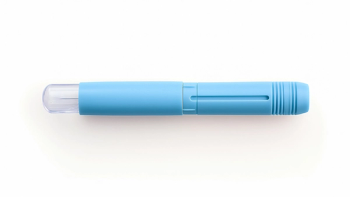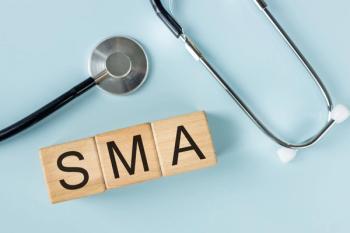
- Applied Clinical Trials-09-01-2008
- Volume 0
- Issue 0
Taking Your John Hancock Digital
New technology has led to a transition from pens to digital signatures and it is becoming a part of everyday life for the pharmaceutical industry.
With the transition from paper to electronic comes the switch from pens to digital signatures. It's par for the course. But electronic signatures are not new. They've been around for some time. Can you even recall the days when UPS drivers carried around a clipboard and pen? The technology has become a part of everyday life for people and businesses, including the pharmaceutical industry.
Within life science, big pharma was among the early adopters of electronic signature technology. Back then, companies used it for internal applications only, and they were on their own in terms of guidelines for use since FDA had not yet released 21 CFR Part 11--Electronic Records; Electronic Signatures. When final rule did emerge in 1997, compliance became a concern.
Rodd Schlerf, life science practice manager at San Francisco-based ARX, a provider of digital signature and data security solutions, describes compliance efforts as having come in two waves. At first, companies used electronic document management systems like Documentum along with a proprietary digital signature. Eventually, however, they realized their limitations. Explained Schlerf: "These companies said, 'we're creating electronic records but they're proprietary, and the only way we can trust the content is within that system.'"
No good. So, in the second wave, a number of big 10 companies turned to a nonproprietary digital signature solution using a public key infrastructure (PKI) arrangement. This approach supported digital signatures regardless of vendor and document management system. It was an improvement, but in an industry as highly regulated and legalistic as pharma, hurdles still existed.
Then around 2004, some of those top 10 companies that had gone the PKI-route formed the SAFE-BioPharma Association (Fort Lee, NJ). Separate working groups focused on technical, identity management, and proofing standards, in the end creating the SAFE-BioPharma Digital Identity and Signature Standard. Other participants in the effort: FDA's CBER and CDER, and the European Medicines Agency.
"Industry developed SAFE-BioPharma with the view that there would be one individual identity for one person so that you wouldn't have five different digital identities," SAFE's President and Chief Executive Officer Molly Shields-Uehling told Applied Clinical Trials. "And these signatures would be recognized by each other and regulators, and would be enforceable." The "each other" in Shields-Uehling's quote refers to other members of the SAFE Trust community. Right now there are 13 member companies, including Pfizer, J&J, GlaxoSmithKline, and Merck.
There's a fee to join, which starts out at around $6000, and companies must sign a contract agreeing to accept and abide by the rules. In return, members obtain a trusted, digital identity either from SAFE-BioPharma or a vendor that has been certified by them as an "issuer." A number of signing technologies are available to members, including a USB, smart card, and roaming ID that allows signing from anywhere with an Internet connection.
But despite its advantages and that more companies are embracing digital signatures, SAFE-BioPharma hasn't yet attracted a huge following. In 2008's Liquent Regulatory Affairs survey from Thomson Reuters, only two percent of respondents said they were "addressing the SAFE initiative." And while 25% reported plans for implementation, Schlerf—whose company is a SAFE vendor partner—says that outside of large pharma SAFE is not a topic of conversation.
It's not that these companies aren't using trust networks though, they're simply establishing them through vendors like Microsoft and Adobe. However, truer words may not have been spoken than when Shields-Uehling said SAFE-Biopharma is gaining traction considering that both companies are now involved with the nonprofit; Microsoft became a SAFE vendor last year and three of Adobe's products are SAFE certified.
Moving forward, the fact that SAFE-BioPharma is cross certified with the U.S. Federal Bridge—a gateway for exchanging documents with government—should help it gain more traction. Schlerf believes the FDA Gateway will eventually be "the" path for electronic submissions, and the Liquent survey revealed a 10% jump from last year in companies using technology to support it. Good thing since a deadline for going fully electronic is coming, predicts Shields-Uehling. —Kerri Nelen
Articles in this issue
about 17 years ago
At Home Testing Offers Solutionabout 17 years ago
Simulated Strategies for Better Trialsabout 17 years ago
Global Trials Draw Regulatory Scrutinyabout 17 years ago
The Ins and Outs of Electronic Medical Recordsabout 17 years ago
Getting to the Heart of Public Distrustabout 17 years ago
Next Generation Site Selection?about 17 years ago
Breaking Barriers to Enterprise Content Managementabout 17 years ago
From Paper to Electronic the FDA Wayabout 17 years ago
Foreign CROs Break Into U.S. Marketabout 17 years ago
EU Scorecard on Medicines for ChildrenNewsletter
Stay current in clinical research with Applied Clinical Trials, providing expert insights, regulatory updates, and practical strategies for successful clinical trial design and execution.






.png)



.png)



.png)
.png)
